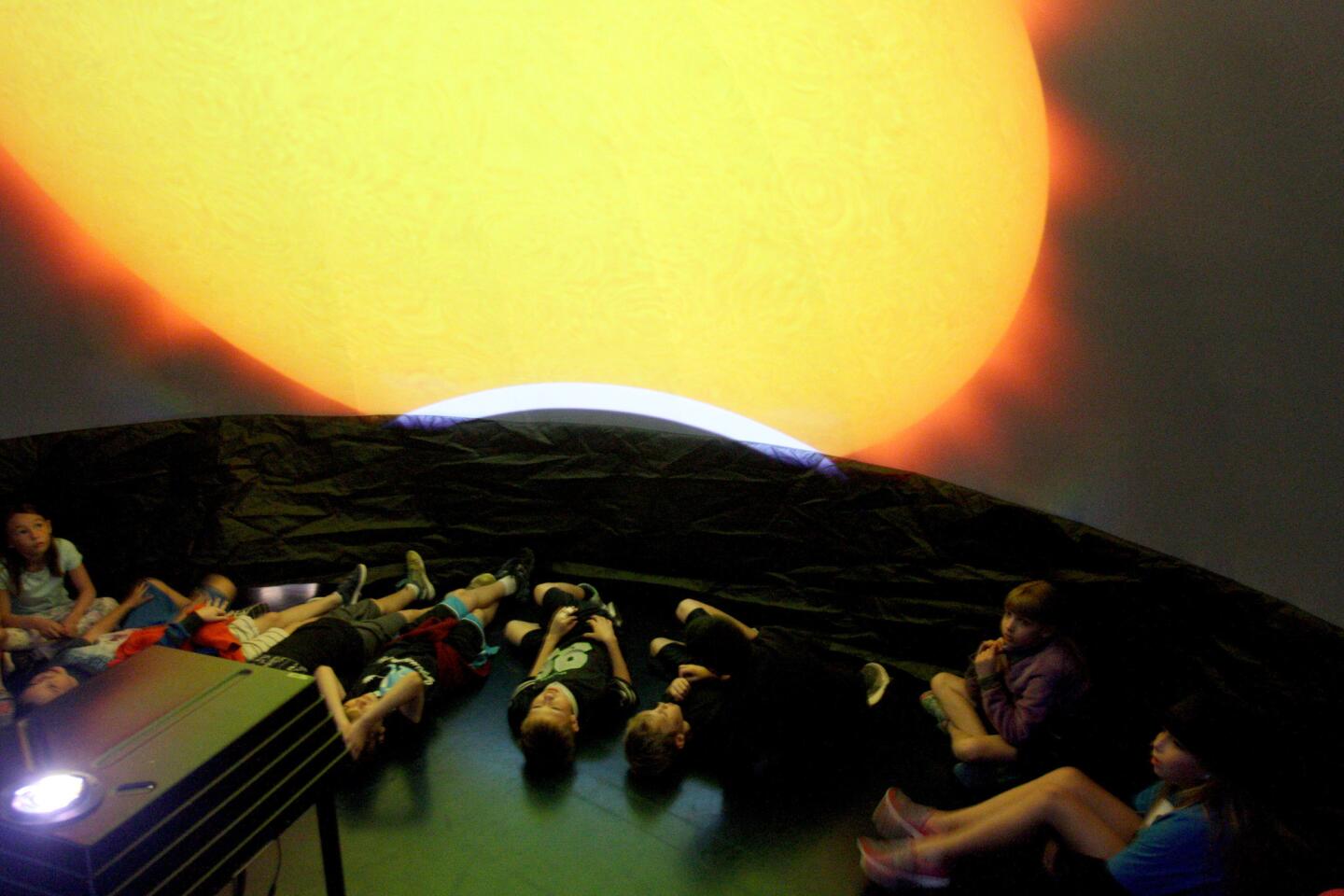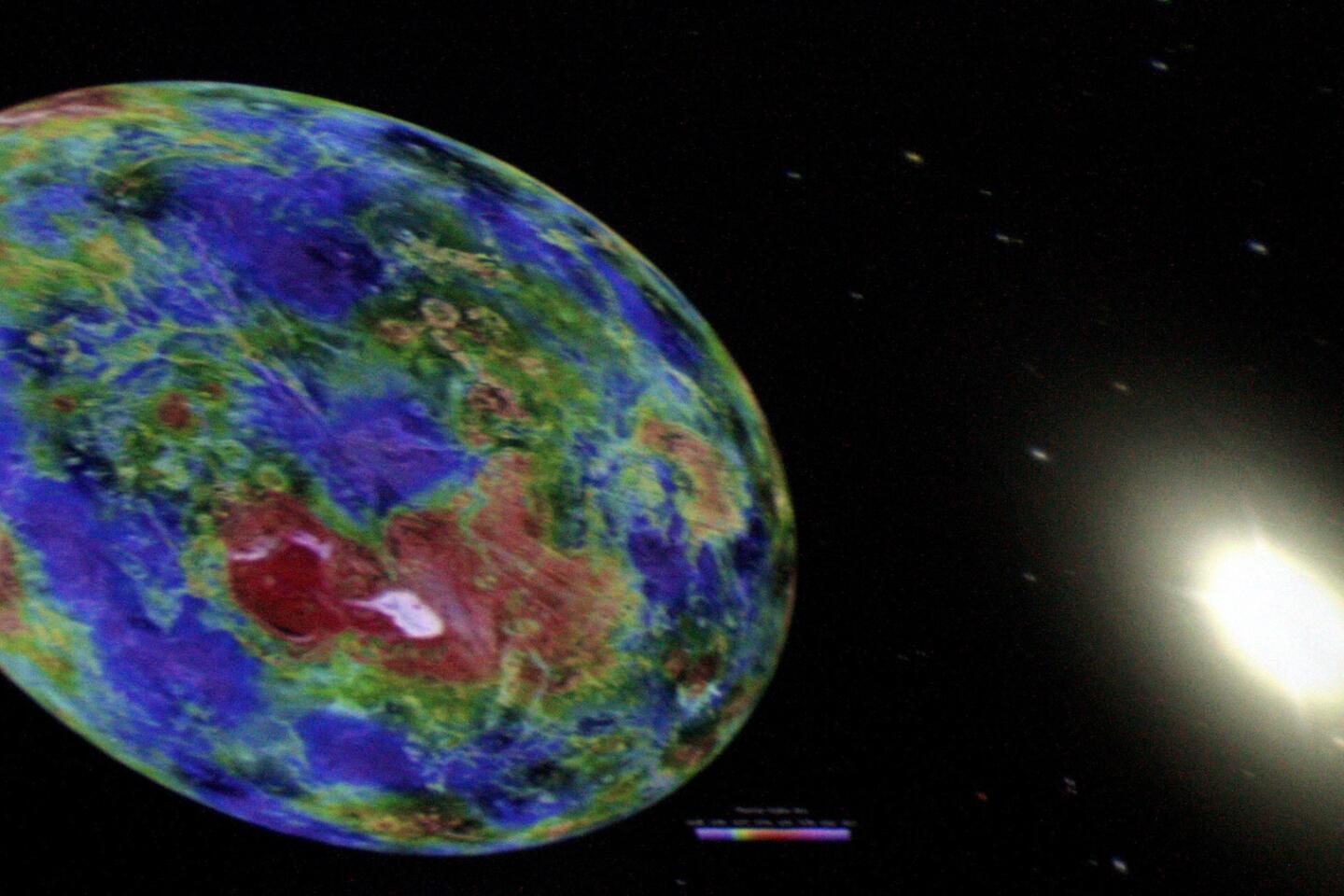Palm Crest Elementary students take a trip to space with JPL scientists
- Share via
Palm Crest Elementary third-graders were given a brief hiatus from school work on Tuesday so they could take a far-flung journey through the solar system with a team of scientists and educators from the Jet Propulsion Laboratory in La Cañada.
As part of the school’s “Science Week,” which culminates with a K-6 science fair Thursday, the students were led on a virtual tour of our corner of the universe, held inside an inflatable makeshift planetarium that projected planets, moons and their relative orbits to the delight of spectators.
NEWSLETTER: Stay up to date with what’s going on in the 818 >>
“What we’re doing is taking them on a little trip through the solar system and trying to match what they see with what they need to be learning in the state standards,” said JPL astronomer Steve Edberg, who manned the control panel Tuesday and led the presentation with education specialist Jeffrey Nee.
For students in Tonya Mizrahi’s class, led that day by substitute teacher Nancy Leininger, stops included Venus, Jupiter, Saturn and, of course, the sun.
“Can anyone tell me how many stars there are in the solar system?” Edberg posed.
Incorrect guesses, ranging from 1,000 to 8 million, ricocheted off the interior dome walls in response.
“The number of stars in the solar system is one,” Edberg elucidated. “What do we call that star?”
“The sun!” screamed the class in unison.
The third-graders got up close and personal with Saturn’s rings and its moon Enceladus, discovered recently to be emitting saltwater plumes from its south pole. They learned the faintly ringed Uranus rotates on its side as the result of a mysterious impact, and that clouds of carbon dioxide above Venus obstruct the view of volcanoes on the planet’s surface. The images came courtesy of the free simulation software NASA’s Eyes, which can be downloaded by the public.
Kelly Sellman, 8, said afterward she was most interested in areas like Mars where it seems some form of life might exist. Her classmate, 8-year-old Luca Bonnici, said his favorite part was learning about Jupiter’s moon, Europa, the destination of a NASA/JPL mission slotted for sometime in the 2020s.
“I liked learning about the moon with the ice that we might visit,” Bonnici said. “I want to go there because there could be a sign of life there — that would be really cool.”
--
Sara Cardine, sara.cardine@latimes.com
Twitter: @SaraCardine





